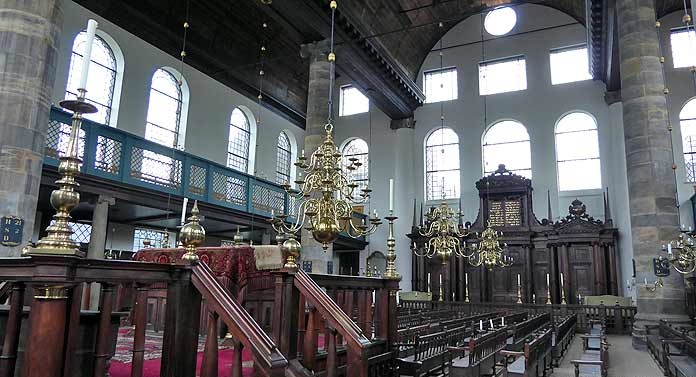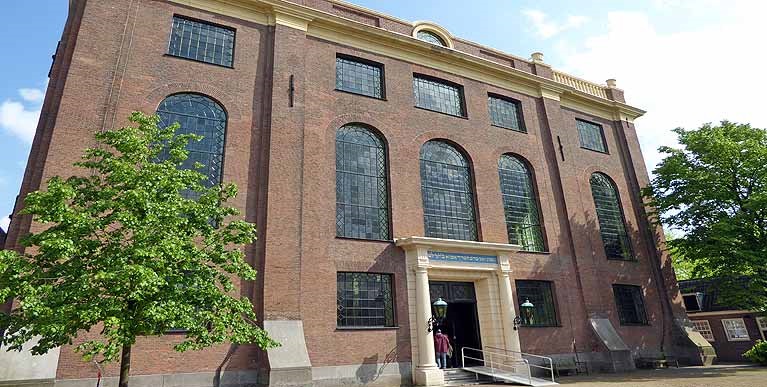The heritage of the Sephardic Jews was dealt a huge blow by the Alhambra Decree and the Spanish Inquisition, but in spite of these cruel attacks against the Jewish populace of the Iberian Peninsula, they managed to persist, in Spain, Portugal or elsewhere in the world. Our kosher cruises to Portugal will let us explore this enduring heritage in a Jewish travel adventure along the illustrious Douro River. While a good number of Sephardic Jews stayed in Iberia, hiding their faith from prying Inquisitors and angry neighbors, a good number of Jews fled and decided to settle elsewhere, bringing their culture with them. One of these destinations was Amsterdam, where they erected the Portuguese Synagogue.

Portuguese Synagogue | Photo Credit: amsterdamtips.com/portuguese-synagogue
Prosperity in Amsterdam
The city of Amsterdam was a prosperous one, even in the 16th century. Unlike Spain, it recognized the commercial value of religious tolerance, allowing Sephardic Jews to immigrate and thrive. The Jews living in Amsterdam would develop silk, sugar, and tobacco, and would later establish the printing press in 1617. It was in this century that the Esnoga, the Portuguese Synagogue of Amsterdam, was developed.
History of the Synagogue
The Portuguese Synagogue was designed by the architect Elias Bouman and was the brainchild of Portuguese Jewish Congregation. Established in 1675, the Synagogue’s design was based on Solomon’s Temple, and true to its name the congregation used Portuguese as its medium of communication. Esnoga or Snoge was the site of the Ets Haim, the world’s oldest functioning Jewish Library.
When the Nazis invaded Holland and began its monstrous campaign to enact genocide on the Jewish populace, the Portuguese Synagogue of Amsterdam looked like it would become another casualty. However, the canny actions of a Jewish fire brigade spared this historic building from bombing, volunteering to patrol the complex and thus discouraging its defilement. When a Nazi administrator considered using the synagogue as a deportation center, a way for hundreds of Netherlands Jews to be rounded up and sent to death camps for systematic killing, a firefighter named Leo Palache successfully convinced him that the synagogue’s architecture could not fulfill such a purpose. He and the other firefighters hid religious objects between the attic and the ceiling, preserving the congregation’s collection of historic relics even as they were removed from their duty later on. Thanks to their actions, the synagogue persists today.

Portuguese Synagogue | Photo Credit: amsterdamtips.com/portuguese-synagogue
Conclusion
Esnoga is a reminder of Jewish heritage in Amsterdam, built from Sephardic decisions and sustained by Jewish diligence. On May 9, 1945, four days after the Liberation of the Netherlands from Nazi tyranny, a service was held in Esnoga, a reminder that despite the harrowing ordeal, there is still hope, still a light borne out of persistence and faith. If one wants to go on Kosher vacations in Holland, then Esnoga is a great destination to add to your travel itinerary.
